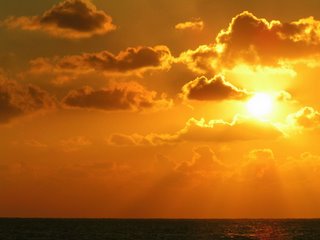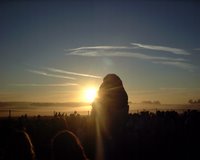
Summer Solstice
21st June (sometimes 20th)
As the sun spirals its longest dance,
Cleanse us
As nature shows bounty and fertility
Bless us
Let all things live with loving intent
And to fulfill their truest destiny
Taken from a Wiccan blessing for Summer
21st June (sometimes 20th)
As the sun spirals its longest dance,
Cleanse us
As nature shows bounty and fertility
Bless us
Let all things live with loving intent
And to fulfill their truest destiny
Taken from a Wiccan blessing for Summer
The Summer Solstice is also known as: Alban Heflin, Alben Heruin, All-couples day, Feast of Epona, Feast of St. John the Baptist, Feill-Sheathain, Gathering Day, Johannistag, Litha, Midsummer, Sonnwend, Thing-Tide, Vestalia.
Solstice, Midsummer or Litha means a stopping or standing still of the sun. It is the longest day of the year and the time when the sun is at its maximum elevation.
Why does the summer solstice happen?
The seasons of the year are caused by the 23.5º tilt of the earth's axis. Because the earth is rotating like a top or gyroscope, the North Pole points in a fixed direction continuously -- towards a point in space near the North Star. But the earth is also revolving around the sun. During half of the year, the southern hemisphere is more exposed to the sun than is the northern hemisphere. During the rest of the year, the reverse is true. At noontime in the Northern Hemisphere the sun appears high in the sky during summertime and low during winter. The time of the year when the sun reaches its maximum elevation occurs on the summer solstice -- the day with the greatest number of daylight hours. It typically occurs on, or within a day or two of, JUN-21 -- the first day of summer. The lowest elevation occurs about DEC-21 and is the winter solstice -- the first day of winter, when the night time hours reach their maximum.
This date has had spiritual significance for thousands of years as humans have been amazed by the great power of the sun. The Celts celebrated with bonfires that would add to the sun’s energy, Christians placed the feast of St John the Baptist towards the end of June and it is also the festival of Li, the Chinese Goddess of light.
Like other religious groups, Pagans are in awe of the incredible strength of the sun and the divine powers that create life. For Pagans this spoke in the Wheel of the Year is a significant point. The Goddess took over the earth from the horned God at the beginning of spring and she is now at the height of her power and fertility. For some Pagans the Summer Solstice marks the marriage of the God and Goddess and see their union as the force that creates the harvest’s fruits.
This is a time to celebrate growth and life but for Pagans, who see balance in the world and are deeply aware of the ongoing shifting of the seasons it is also time to acknowledge that the sun will now begin to decline once more towards winter.
When celebrating midsummer Pagans draw on diverse traditions. In England thousands of Pagans and non-Pagans go to places of ancient religious sites such as Stonehenge and Avebury to see the sun rising on the first morning of summer. Many more Pagans hold small ceremonies in open spaces, everywhere from gardens to woodlands.


No comments:
Post a Comment